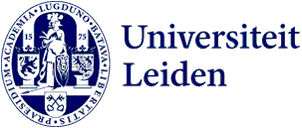
Finding the origin of giant black holes
‘Space Antenna LISA will open an unprecedented window on the Universe,’ says astronomer Elena Maria Rossi. The mission will be the first one to detect Gravitational Waves from space. These can tell us more about the beginning of our Universe and the formation of black holes. With an NWO grant of twelve million euro, a Dutch consortium will build the ‘eyes’ for the space antenna. ‘The unexpected is bound to be discovered!’
Gravitational Waves travel through space and time since the infancy of the Universe. By detecting these waves, epochs of our past that are not currently observed become accessible. ‘One of the things these detections will allow us to observe, is the era of formation of the first black holes in the Universe,’ Rossi says.
In order to detect these gravitational waves, ESA is building a Laser Interferometer Space Antenna (LISA). It consist of three satellites that will follow the earth in a triangular equilateral formation as it revolves around the Sun. ‘Laser beams are shot back and forth between the three satellites. By continuously measuring their mutual distances with laser beams, they can detect the gravitational waves from the Universe.’ LISA is the first mission to detect these waves from space. The 2.5 million km distance between satellites allows LISA to detect much lower frequencies of gravitational waves than ground-based detectors.

Unveiling the mystery of black holes
Gravitational waves can travel unaffected from any corner of the Universe. That makes them incredibly powerful messengers. ‘They can bring us information from the far past of our Universe to help us understand where we come from.’ It allows us to ‘listen’ for the first time to the Big Bang for example.
And LISA may help us unravel more secrets of the Universe, such as giant black holes. ‘They can have masses of 1 million to 10 billion times that of our Sun. These black holes are super interesting to study as they are important for a galaxy’s formation and growth. Until now, we don’t know how they form. LISA will observe the giant black holes from their very beginning, unveiling the mystery of their origin.’
Building the eyes of LISA
A Dutch consortium led by SRON Netherlands Institute for Space Research will build the photodiodes (the ‘eyes’), software, pointing mechanism and corresponding readout electronics for LISA. With the NWO grant, they became an important partner of the mission.
Rossi will be leading the work towards understanding and developing the optimal way to analyse LISA’s data. ‘I am a theoretical scientist, interested in the formation and evolution of black holes. And in how to use gravitational waves to investigate our own Galaxy. With my group, I will simulate which signals we may expect to observe: these predictions are then used to build, test and validate the computer codes that will be used to analyse the data.’

Only entrance to an entirely new field
'A Dutch contribution to LISA is of great importance for The Netherlands,' says Gijs Nelemans, one of the leaders of the LISA-NL consortium. 'Dutch scientists build up unique expertise, and access to all data gives us a head start on the only entrance route to an entirely new field.' By showing the skills and knowledge in the development of precision technology for LISA, they hope to underline their candidacy to build the Einstein Telescope. This is a ground-based gravitational wave detector in which The Netherlands, Belgium and Germany are joint candidates to build it
LISA should be up in space by 2030. There is still a lot of work to do, but Rossi looks forward to the day she gets the first data. ‘I hope to learn more about the origin of black holes and discover new phenomena that are currently unknown. I am very excited to be part of the scientific endeavour that will enormously advance our knowledge of the Universe.’
NWO has awarded the twelve million euro grant as part of the call for National Roadmap consortia Large-Scale Research Infrastructures. Nine proposals were approved in this round.
The development of the LISA mission is led by ESA. NASA and a number of ESA Member States also participate. Read more on the website.
Text: Inge van Dijck
Images: NASA/JPL-Caltech/NASAEA/ESA/CXC/STScl/GSFCSVS/S.Barke
